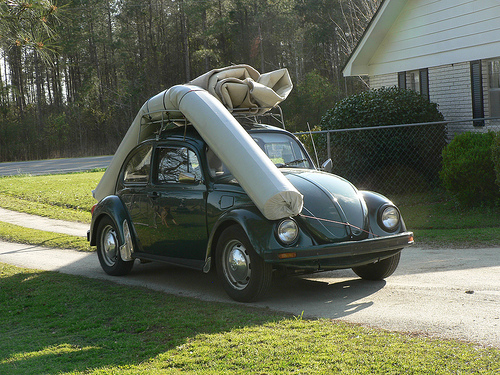Ever seen those cars trucking down the road with stuff hanging out the sides and wonder how they could think they need so much? Maybe more close to home, how often after a trip do we unpack and put away clothes we never used and books we never read? We tend to plan for every contingency we can think of and pack it in.
While avoiding the disasters that certainly await those who pack nothing, we can easily take on extra weight that brings its own cost. Slow waltzes down airport terminals and trunks that just don’t seem big enough. But it could be worse: it’s one thing when we just have to carry more luggage through the airport, it’s another if we don’t even make the flight because we’re still thinking about all the various things we might need and figuring out how to fit them in.
And while most of us will laugh at the absurdity of that when traveling, we’ve also probably seen this exact analogy when starting down the path of doing some R&D project. It seems like a good idea, but never gets off the ground as people want to plan for everything before getting started. Like venturing out into the wilderness, we don’t know what we are going to run into and we never will if we get paralyzed by all the challenges we might run into. Instead we need to think far enough ahead to take the next steps and then implement a process to reassess where we are, what we need to do from here or whether we should just pack it in.
Those who never venture learn nothing and many things are impossible to plan to the end. Instead when taking on something difficult, we should identify the next hill that needs to climb, climb that hill and then reassess what’s next. Don’t fret that we can’t see over that next peak or the scary monsters that might lurk there. Have confidence that we’ll figure it out when we get there.
Photo Credit: crowdive Flickr cc

Leave a Reply